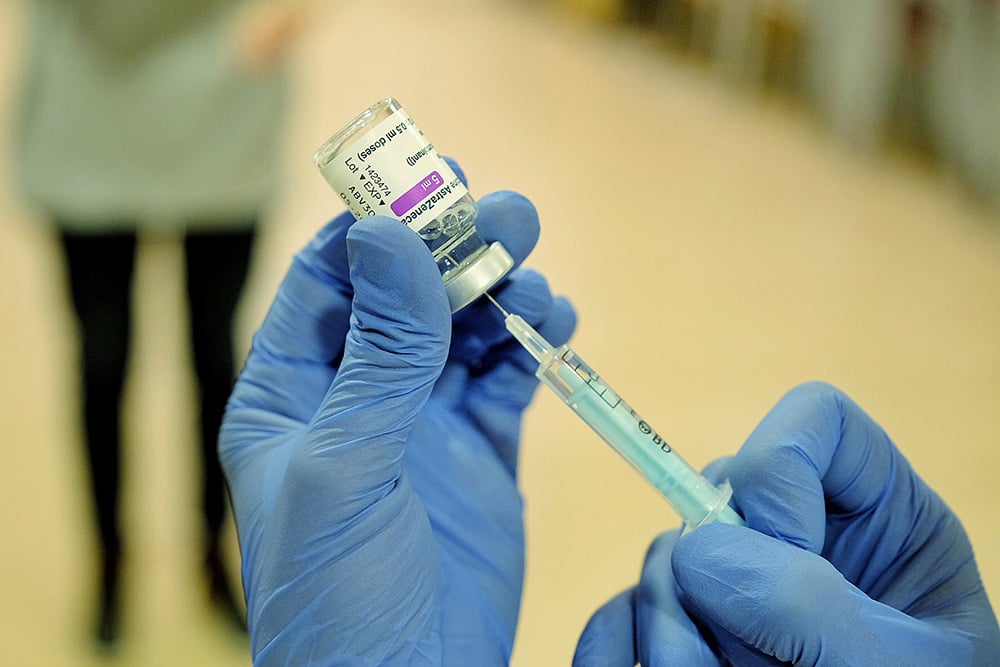Compiled by veteran medical journalist Brian Owens, this roundup of some of the newest science on the COVID-19 pandemic, straight from the scientific journals, is presented by Hakai Magazine in partnership with The Tyee.
Benefits of AstraZeneca vaccine outweigh the risks
Pausing or restricting the use of the AstraZeneca vaccine, even for a short time, could cause more deaths from the faster spread of COVID-19 than from blood clots. Researchers used data from France and Italy, two countries that have suspended the use of the AstraZeneca vaccine, to model the outcome of the vaccine pause. They found that a pause of just three days would lead to about 130 additional deaths in France and 260 in Italy. Even if countries resume using the vaccine quickly, and double the rate of vaccinations, the effect of the interruption is difficult to overcome.
How common are vaccine side effects?
Around one-quarter of people in the U.K. experienced mild systemic side effects, like headache, fatigue, fever or nausea, after receiving either the Pfizer-BioNTech or AstraZeneca vaccines. About two-thirds experienced mild local side effects at the site of injection, such as pain, swelling or itching. Headaches were the most common systemic side effect, and tenderness was the most common local one.
The Lancet Infectious Diseases, April 27, 2021
Vaccine protects against variants in people who were already infected
A single dose of the Pfizer-BioNTech vaccine boosts protection against some of the more dangerous COVID-19 variants in people who have previously been infected with the virus. But for those who have not previously been infected, a single dose may not provide sufficient protection against the variants. The study looked at the U.K. and South Africa variants, but the researchers believe the results may be the same for other variants of concern, such as the ones first seen in Brazil and India.
Elimination leads to better outcomes than mitigation
Countries that pursued the elimination of COVID-19 through more aggressive non-pharmaceutical interventions like lockdowns had better health and economic outcomes than those who tried to just reduce the spread through less strict and more targeted interventions. Countries that opted for elimination, like Australia, Iceland, Japan, New Zealand and South Korea, had around 25 times fewer COVID-19 deaths per one million population than those that favoured mitigation. And they performed better economically as well. GDP growth returned to pre-pandemic levels in early 2021 in the five countries that opted for elimination, whereas growth is still negative for other rich countries. Elimination strategies also led to shorter and less strict restrictions on civil liberties.

Compromised immune systems offer virus more chances for mutation
Young people with compromised immune systems, such as those undergoing cancer treatment, may experience prolonged infections with COVID-19, giving the virus more opportunities to mutate. A study of three young patients undergoing treatment for leukemia found that they remained infected with COVID-19 for up to six months. Since the virus mutates about once or twice a month, such long infections — even though they are rare — could provide more opportunities for new variants to arise.
In-person schooling raises infection risk, but common mitigation measures help
COVID-19 infection rates were significantly higher for adults living with children who attended school in person, according to a study of more than 130,000 schools in the United States. But the results also showed that the risk can be managed through common school-based mitigation measures. Safety measures like daily symptom checks, teachers wearing masks and cancelling extracurricular activities substantially reduced the risk of infection, and when seven or more such measures were in place the risk was practically eliminated.
Income inequality linked to more infections and deaths
Places with higher levels of income inequality had more COVID-19 infections and deaths, according to a study in the United States. The association was strongest in the summer, which the researchers suggest may be because of the economic pressure on lower-income people to go to work in higher-risk jobs such as restaurants and hotels. The researchers suggest that counties with higher levels of income inequality should give priority for interventions in order to mitigate the spread and lessen the burden of inequality.
JAMA Network Open, May 3, 2021
Hospital mortality fell quickly early on, but then plateaued
Hospital deaths from COVID-19 in the United States fell by 38 per cent between March and May last year, but there has been little further improvement since then. Mortality rates were 19.1 per cent in March and April, 11.9 per cent in May and June, 11 per cent in July and August, and 10.8 per cent from September through November.
Differences in age, sex, comorbidities and severity of disease had no effect on the trend. The researchers suggest the initial drop could be due to doctors learning how better to treat patients, while the lack of further improvement might reflect hospitals being stretched to the limit by more severe second and third waves of infection.
JAMA Network Open, May 3, 2021
Kids got less exercise during lockdown, but drug use stayed the same
The use of e-cigarettes, cannabis and alcohol among adolescents did not change significantly during lockdown, but physical activity declined substantially, according to a study of teenagers in northern California. The researchers suggest that substance use prevention should continue, but more effort is required to increase physical activity.
Read more: Coronavirus, Science + Tech















Tyee Commenting Guidelines
Comments that violate guidelines risk being deleted, and violations may result in a temporary or permanent user ban. Maintain the spirit of good conversation to stay in the discussion.
*Please note The Tyee is not a forum for spreading misinformation about COVID-19, denying its existence or minimizing its risk to public health.
Do:
Do not: